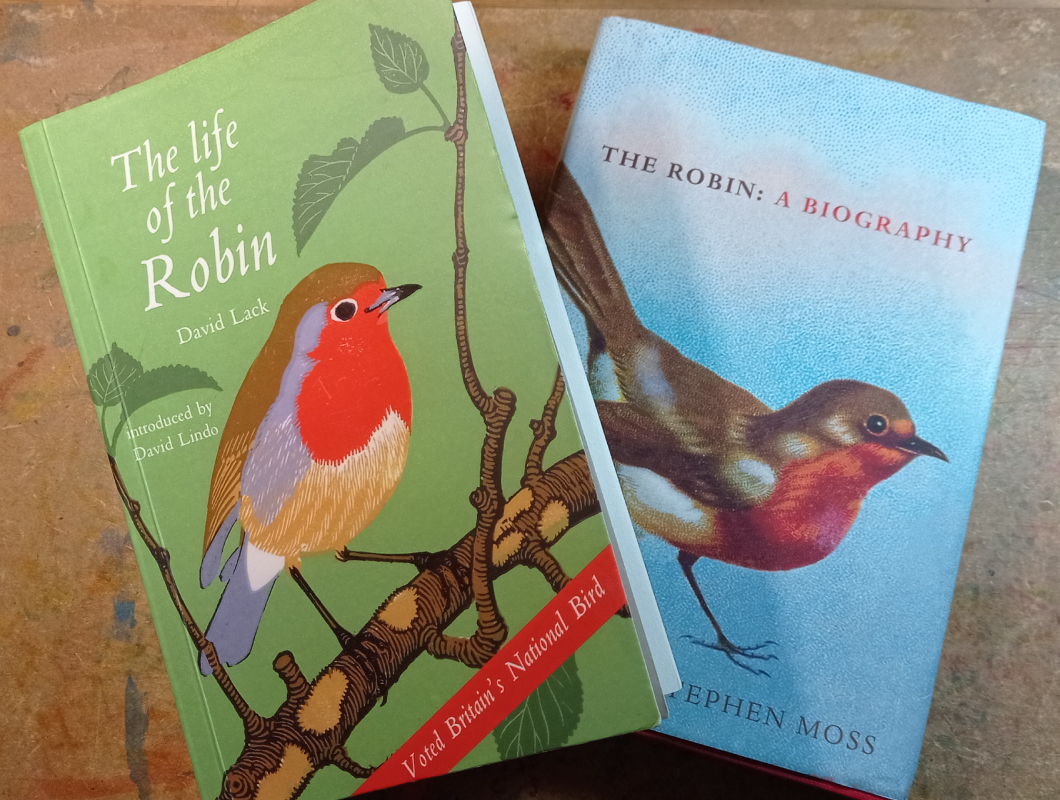SPRING 2025 - I've just completed a WEBSITE REVAMP! Everything is still here but may be in a slightly different place where than you left it and there's also lots of new sections, so if you're having trouble finding something in particular or you spot something that's not working as it should, please do get in touch and I'll do my best to help!

Willow Tree Symbolism
Celtic Willow Art
- Home
- Nature Art
- Celtic Tree Art
- Celtic Willow
Willow tree symbolism and meaning - Celtic tree calendar - beautiful Celtic willow art prints and arty products…
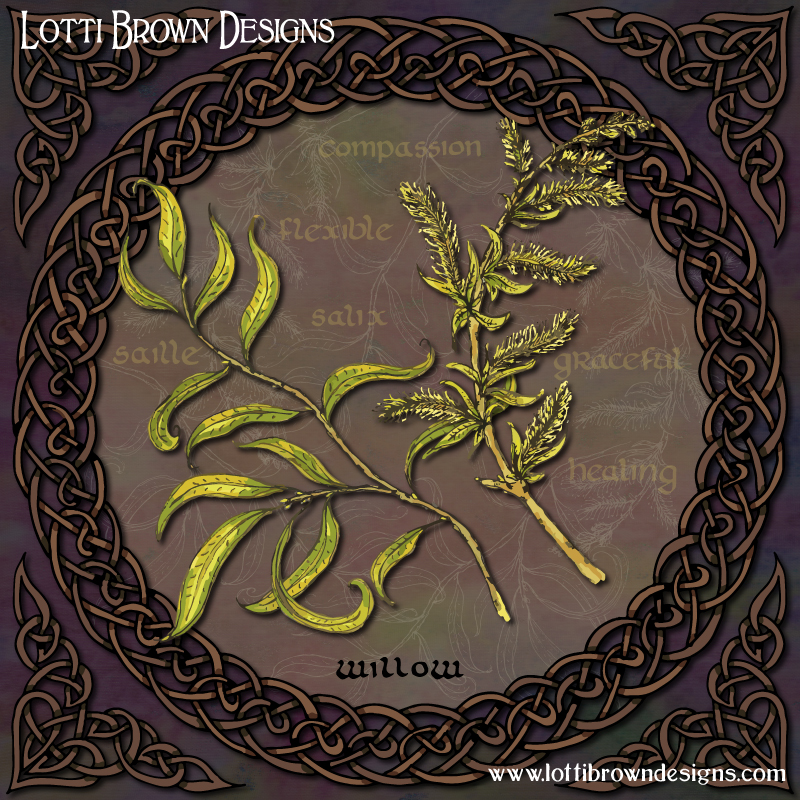 Celtic Willow art by Lotti Brown
Celtic Willow art by Lotti BrownThis is part of my Celtic Tree Calendar art series - a project I did through 2020-2021 exploring the trees of the Celtic Tree Calendar year and our cultural and spiritual connection with them.
If you want to find out more about what the Celtic Tree Calendar is, I explain it on this page...
Buy the Willow art prints & products (undated) here...
Buy the Celtic Tree Calendar version of the Willow art (dated 15th April to 12th May) here...
 Celtic tree calendar Willow art print
Celtic tree calendar Willow art printWillow Tree Symbolism and Meaning
The mystical willow tree is one of our ancient native British trees (White willow, Salix alba) and is a favourite in countryside and gardens.
I, myself, grew up with a willow tree in our family back garden and I lived for many years with two enormous willow trees at the front of the house (in the neighbour’s garden).
The willow tree is beautiful – an elegantly-shaped tree that dances in the wind and grows in atmospheric, watery places – so it’s no wonder that people have always taken the willow to their hearts.
 Willow tree
Willow treeIn ancient Tibet, the willow was revered as the ‘world tree’ or ‘tree of life’.
Our modern name for the willow comes from the Anglo-Saxon ‘wileg’.
Willow
- Latin name: Salix
- Irish/Gaelic name: Saille
- Common names: Sally tree, saugh tree, withy, withe, osier
- Celtic tree calendar: 15th April to 12th May
- Qualities: healing, flexibility, graceful, compassion
- Associations: moon, water, healing, inspiration, protection, harmony
We have a long relationship with the willow tree – we’ve long recognised its usefulness and its special abilities as well as its inherent beauties...
The Healing Tree
 Buds of pussy willow
Buds of pussy willowWe know that as early as the first century AD, the Ancient Greek physician, pharmacologist, and botanist, Pedanius Dioscorides, wrote about the healing qualities of willow in his extensive book De Materia Medica, (On Medical Material).
He was also employed in the Roman army for his medical knowledge. He used willow bark for pain relief and to lower fevers, and its been used traditionally, now, for these purposes for hundreds if not thousands of years.
Culpeper’s Herbal, a 17th century guide of herbal medicine, notes the use of willow for pain relief, catarrh, sore throats, to lower fevers, stop bleeding, for mouth ulcers and as a disinfectant.
Culpeper links willow to the moon, saying “the moon owns it” – and indeed, as we shall see, the willow has long had a mythical association with the moon.
Wise women and healers would frequently take advantage of the healing qualities of willow…
Under the idea of the ‘Doctrine of Signatures’, the physical characteristics of a plant were thought to denote their healing powers. So willow was known to grow in damp, watery places and was used to heal damp-weather complaints – especially to ease the aches and pain of rheumatism and arthritis.
Because of its healing use by the wise women, the willow became known as the ‘witch’s tree’ and later as ‘witch’s aspirin’.
The willow is often linked to the Celtic ‘Morrigan’ or Morgana le Fay of Arthurian legend. In early tales of Morgana le Fay (also known as Morgan le Fay) in Geoffrey of Monmouth’s ‘Life of Merlin’, Morgana is a beautiful shape-shifter princess of watery Avalon and her special skill is healing, like the willow…
In later tellings of the Morgana le Fay tales, she takes on a ‘witch’ aspect, just as the healing willow tree also began to be associated with ‘witches’.
The chemical in willow, salicylic acid, which gives the tree its healing qualities is now used in our modern pain-killing and fever-soothing drug aspirin, after work by Edward Stone in the 18th century to heal patients suffering from fever with willow bark.
Even today in herbal medicine, willow is still used for fever, neuralgia, rheumatism, arthritis, cuts, burns and ulcers.
Willow was also thought to have healing properties for emotional difficulties, too, with traditional use for emotional distress, bitterness, and resentment – being able to restore emotional balance and allow emotions to flow more freely in order to bring harmony.
Today, Bach Flower Remedies advise willow for feelings of negativity and resentment. Bach Flower Remedies call the herb ‘forgive and forget’.
The Protective Tree
 Weeping willow
Weeping willowAs well as healing, willow traditionally protects.
Although it has been traditionally viewed as unlucky to cut willow, it was seen as safe to do so for Palm Sunday…
Goat willow (Pussy willow) was known as Palm Willow and was commonly cut for Palm Sunday celebrations and carried to church.
 Pussy willow
Pussy willowThe Palm Willow was then kept through the year to protect the home against thunder, lightning, disease and other dangers.
Willow twigs would be placed around the hearth of the home and around crops or animals in garden and fields to protect these for the coming year.
It is thought that the ancient Celtic Druids would use goat willow to make wands to give protection against evil.
The saying “knock on wood” or “touch wood” may have come from ancient customs of knocking on or touching a willow tree to bring good fortune and avoid bad fortune.
The Celts would use willow wood for coracles and boats and travellers and adventurers would set out with the protection of being in willow boats ‘over the ninth wave’ to seek their destiny.
In Romania, people celebrate St. George on 23 April – ‘Sfantul Gheorghe’ – and in certain regions, including Bucovina, people will still plant cut willow branches in freshly cut earth and place them at the entrances to their homes.
Traditionally, on 23/24 April, in areas of Eastern Europe including Romania and Slovenia, people would celebrate ‘Green George’ (also known as ‘Zeleni Jurij’) where a young man would be covered in greenery, often birch and sometimes willow, to recognise the springing of new life.
Celebrations would traditionally often centre around a willow tree from which blessings, healings and protections were invoked.
Tree of Eloquence and Inspiration
The willow is seen as the tree of inspiration and eloquence for poets, bards, and musicians.
Celtic harps were traditionally made from willow, such as the Trinity College harp, built in the 14th or 15th century and linked to the High King of Ireland, Brian Boru.
In Ancient Greek mythology, Orpheus is said to have carried willow branches into the Underworld and acquired the gift of eloquent communication from willow, and he was given a lyre by the god Apollo.
 Willow tree in Spring
Willow tree in SpringThe Greek goddess Helice was a willow nymph – the name means ‘willow’. Associated with Helice, the ‘willow-muse’ Heliconian was the inspirational muse sacred to poets and gifted inspiration from the sounds of wind in the willow trees.
Tree of the Otherworld
Willows are often seen as gateway or boundary trees – the trees of the ‘in-between’ liminal places – on the banks of rivers and streams, between water and dry land…
And remember that in ancient Celtic times, watery places were seen as sacred places – so willow trees were viewed as able to connect the world of humans with the mystical Otherworld.
Bees are very attracted to all kinds of willow trees for the pollen and were seen as messengers from the Otherworld.
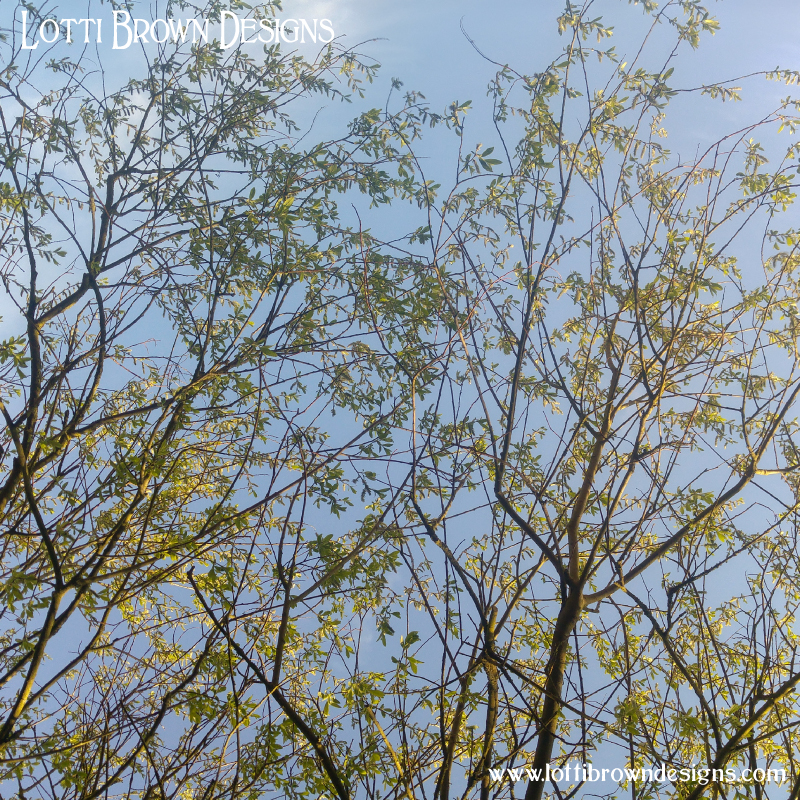 Willow tree branches
Willow tree branchesDruids would sleep beneath willow trees to involve dreams of divination and Celtic priests would use cut willow for the same purpose. In Celtic tales of Manannan mac Lir, willow rods were used for divination.
Persephone, Queen of the Greek Underworld, had a grove of ancient willows in the underworld of Tartarus. And the Greek sorceress Circe had a grove of willows dedicated to Hecate and the magic of the moon.
Flints shaped as willow leaves have been found in megalithic tombs. In Britain, burial mounds were often planted with willows thought to be for protection of the spirits.
Traditionally, willow was put into coffins and young willow saplings were planted on graves as in the Celtic way, which respected the tree as representing the spirit of the deceased.
Folk traditions say to “plant a willow and allow it to grow, to ease the passage of your soul at death.”
And mourning garlands would be made from willow – and those in mourning were said to ‘wear the willow’.
In truth, the role of willow in death and mourning ritual is likely only half the story, as willow is also seen as the tree of rebirth…
The Tree of Rebirth of Spring
Willows grow vigorously in spring and even a small twig or cut branch of willow, stuck into the ground, will quickly take root and grow into a young sapling.
As such, the willow is seen to represent rebirth, new life, and vigour – including fertility.
In fact, ancient Chinese tradition sees the willow as a tree of immortality for this very special ability.
In Celtic times, the willow was a special tree for spring time – but equally, it had symbolic resonance going into winter – the twin themes of death and rebirth.
In early Spring, the Celtic goddess Brigid/Brighid was celebrated on February 2nd, the feast of Imbolc. Brigid brought Spring from Winter and was said to carry a wand of willow with an acorn tip to control the weather.
Willow has a further connection to the Celtic late-spring celebrations of Beltane/Beltaine (May 1st)…
The ancient Sumerian goddess of the moon, water and willow was Belili – and her consort was the sun and willow god Bel/Belin. Bel gradually became more widely recognised as a sun-god than his moon-goddess willowy wife…
Bel was celebrated at his own feast of Beltane – which became known as a sun festival marking the birth of summer over winter.
The Tree of the Moon
 Branches of Pussy Willow in Spring
Branches of Pussy Willow in SpringThe ancient willow-goddess of Belili is not the only association of the willow tree with the moon…
The Welsh Celtic enchantress and goddess of the moon is Ceridwen and her tree is the willow. In the story of Ceridwen, her cauldron is seen as the font of poetic inspiration and divination – so linking the willow with clairvoyance and magic.
The goddess Artemis is also associated with the moon and was said to have been discovered amongst the willows.
The goddess Hecate, too, associated with the goddess Helice, links the moon and willow tree together.
Linked with the energy of the moon, the willow takes on a feminine-type energy of flow, flexibility and balance as well as gentle compassion and emotional sensitivity.
The Wandering Tree
Folklore tells of willow trees walking in the night!
In Somerset, it was said that:
“Willow do walk if you travels late”
And in Exmoor, travellers reported hearing muttering and being followed by willow trees.
A magical tree of spirit, indeed!
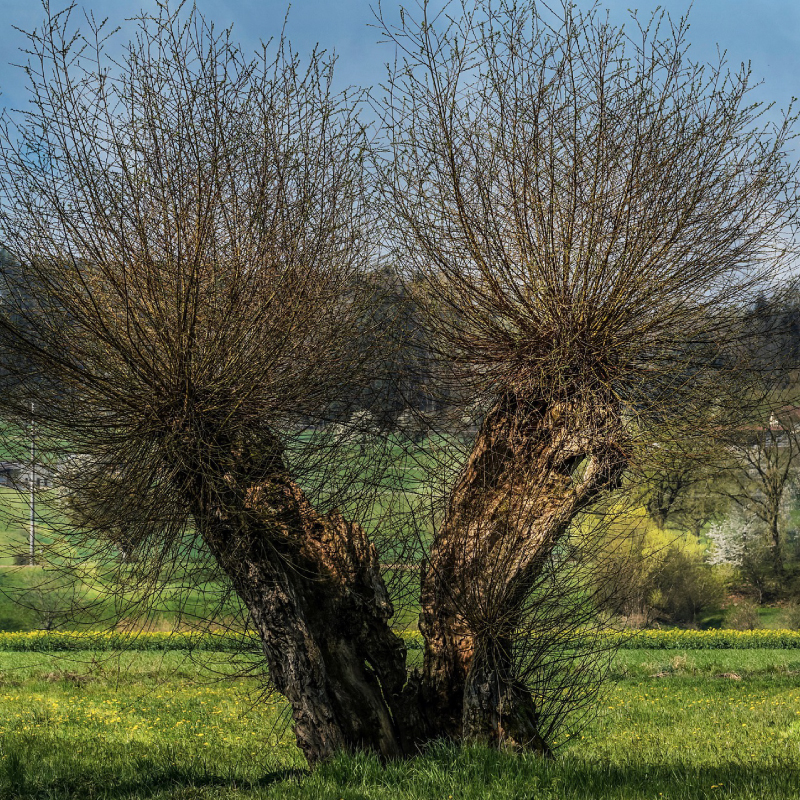 Do willow trees walk in the night..?
Do willow trees walk in the night..?Willow Tree Symbolism and Meaning
 Willow drawings
Willow drawingsThere’s no doubt that the willow is a tree that’s always been special to us and that we hold dear to our hearts.
Willow is the gentle tree of healing, protection and compassionate wisdom – a tree that can support us in the in-between times, the ends that bring new beginning - bringing eloquence, inspiration and flexibility to restore balance and harmony to our lives.
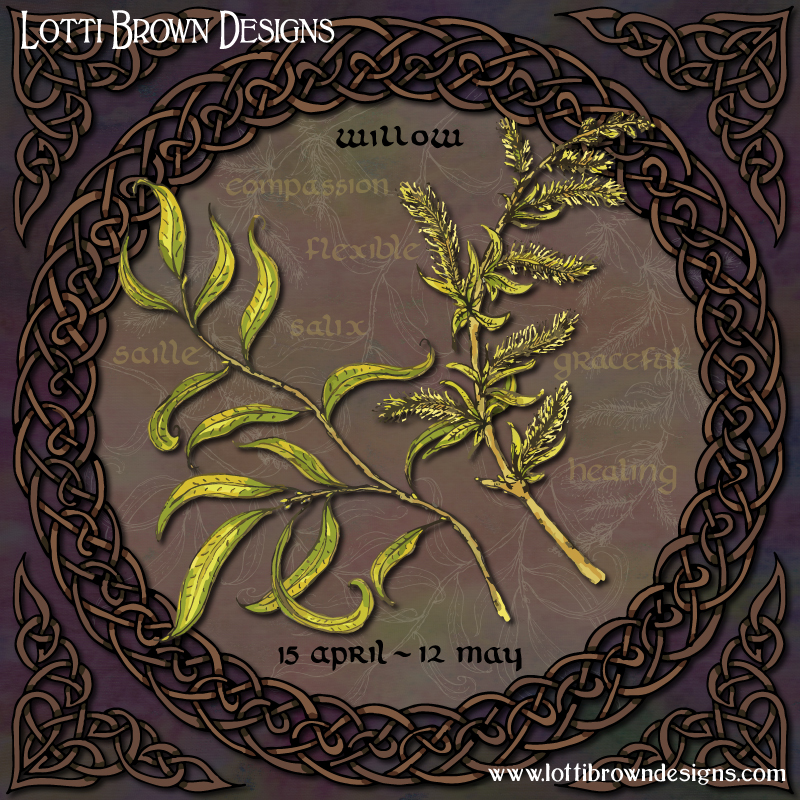 Celtic Tree Calendar Willow - 15th April to 12th May
Celtic Tree Calendar Willow - 15th April to 12th MayCeltic Willow Art
I created two versions of my Celtic Willow art - with and without the Celtic Tree Calendar dates (15th April to 12th May):
- standard version (no dates)
- dated version (with Celtic Tree Calendar dates 15th April to 12th May) - a lovely idea if you know a nature lover with a birthday, anniversary or other special occasion within these dates.
A variety of framed and unframed art prints, plus other printed products including throw pillows, shower curtains, blankets, T-shirts and sweatshirts, bags, phonecases, notebooks, and more - all at my Redbubble store with worldwide delivery from your nearest manufacturing location and customs refunds (if required) - see the links below for more...
Here are a few ideas for the sorts of products that are available - please remember there are two versions, so check whether you're looking at the dated or undated version - if you want the other version than that pictured, click on the relevant button just above (or at the bottom of this section) to see everything available in that particular design...
Please remember there are two versions of my Celtic Willow artwork - the standard version (no dates) and the Celtic Tree Calendar version with the dates for the Celtic Tree Calendar month of Willow (15th April to 12th May) - use the links here or just below to find the print or product you want...
Find out more about the Celtic Tree Calendar here - and see all my other Celtic Tree Calendar artworks for the other months on this page...
You can see all my other artworks starting on this page - you might particularly like the other Celtic artworks here...
Further Reading
- Tree Wisdom – J. M. Paterson
- Plant Lore and Legend – R. Binney
- Celtic Tree Magic – D. Forest
- Folklore of Plants – M. Baker
- RHS Encyclopedia of Herbs – D. Brown
- Illustrated Encyclopedia of Herbs – Chancellor Press
- Penguin Dictionary of Symbols
- https://traditionsacrosseurope.wordpress.com/2008/04/26/23-april-in-romania-sfantul-gheorghe-st-george-day/ Accessed 24 April 2020
Have you ever thought about nature journaling..?
If you like nature, you might like to start your own nature journal!
Find out all about nature journaling here...
You can get started with my free guide here.
Or take my short nature journaling course with nature journaling prompts to get you confident with nature journaling in your own way - take a look here...
Want to keep in touch?
Sign up below for my free email newsletter...
My newsletter is usually sent out once a month (at the end of one month or the start of the following month) and you can unsubscribe any time...
Sign up below...!
Recent Articles
-
Willow Tree Symbolism and Celtic Willow Art
Apr 11, 25 05:43 AM
Explore willow tree symbolism and meaning - Celtic willow art and printed products... -
Wild Dog Rose Pattern & Products
Apr 07, 25 06:12 AM
Pretty dog rose pattern and products in a nostalgic heritage style recalling pretty hedgerows of flowers... -
British Robin Book Recommendations
Apr 04, 25 06:26 AM
My British Robin book reviews and recommendations - learn about Britain's favourite bird...
Follow me:
Share this page:









